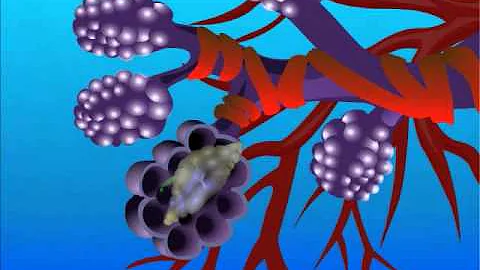Where do you find Aspergillus?
The fungus is often found growing on dead leaves, stored grain, compost piles, or in other decaying vegetation. It can also be found on marijuana leaves. Although most people are often exposed to aspergillusaspergillusAspergillosis is a fungal infection of usually the lungs, caused by the genus Aspergillus, a common mould that is breathed in frequently from the air around, but does not usually affect most people.https://en.wikipedia.org › wiki › AspergillosisAspergillosis – Wikipedia, infections caused by the fungus rarely occur in people who have a healthy immune system.
Where do you catch Aspergillus?
People can get aspergillosis by breathing in microscopic Aspergillus spores from the environment. Most people breathe in Aspergillus spores every day without getting sick. However, people with weakened immune systems or lung diseases are at a higher risk of developing health problems due to Aspergillus.

Where in nature is Aspergillus found?
Aspergillus species are filamentous fungi that are commonly found in soil, decaying vegetation, and seeds and grains, where they thrive as saprophytes. Aspergillus species can be occasionally harmful to humans [1-3].
Is Aspergillus common in homes?
Aspergillus lives in the environment
Aspergillus, the mold (a type of fungus) that causes aspergillosis, is very common both indoors and outdoors, so most people breathe in fungal spores every day.
What foods is Aspergillus found in?
Aspergillus fungus normally grows on damp plant matter including crops such as peanuts, soybeans, rice and maize.
How do you get Aspergillus fungus?
Most people develop this infection by breathing in mold spores. Less often, infection can develop when spores enter the body through a cut or open wound. Allergic bronchopulmonary aspergillosis is more likely to occur in individuals who have asthma or cystic fibrosis.
Is Aspergillus everywhere?
The mold that triggers the illnesses, aspergillus, is everywhere — indoors and outdoors. Most strains of this mold are harmless, but a few can cause serious illnesses when people with weakened immune systems, underlying lung disease or asthma inhale their fungal spores.
How do I know if I have Aspergillus?
Signs and symptoms of this condition, known as allergic bronchopulmonary aspergillosis, include: Fever. A cough that may bring up blood or plugs of mucus. Worsening asthma.
What kills Aspergillus?
Triazole antifungal drugs, commonly called azoles, are the primary treatment for aspergillosis. Azole-resistant A.
What are the first signs of Aspergillus?
Signs and symptoms depend on which organs are affected, but in general, invasive aspergillosis can cause:
- Fever and chills.
- A cough that brings up blood (hemoptysis)
- Shortness of breath.
- Chest or joint pain.
- Headaches or eye symptoms.
- Skin lesions.
How long can you live with Aspergillus?
Chronic pulmonary aspergillosis (CPA) is a chronic progressive infection that destroys lung tissue in non-immunocompromised patients. Contemporary series suggest 50–85% 5-year mortality, with few prognostic factors identified.
